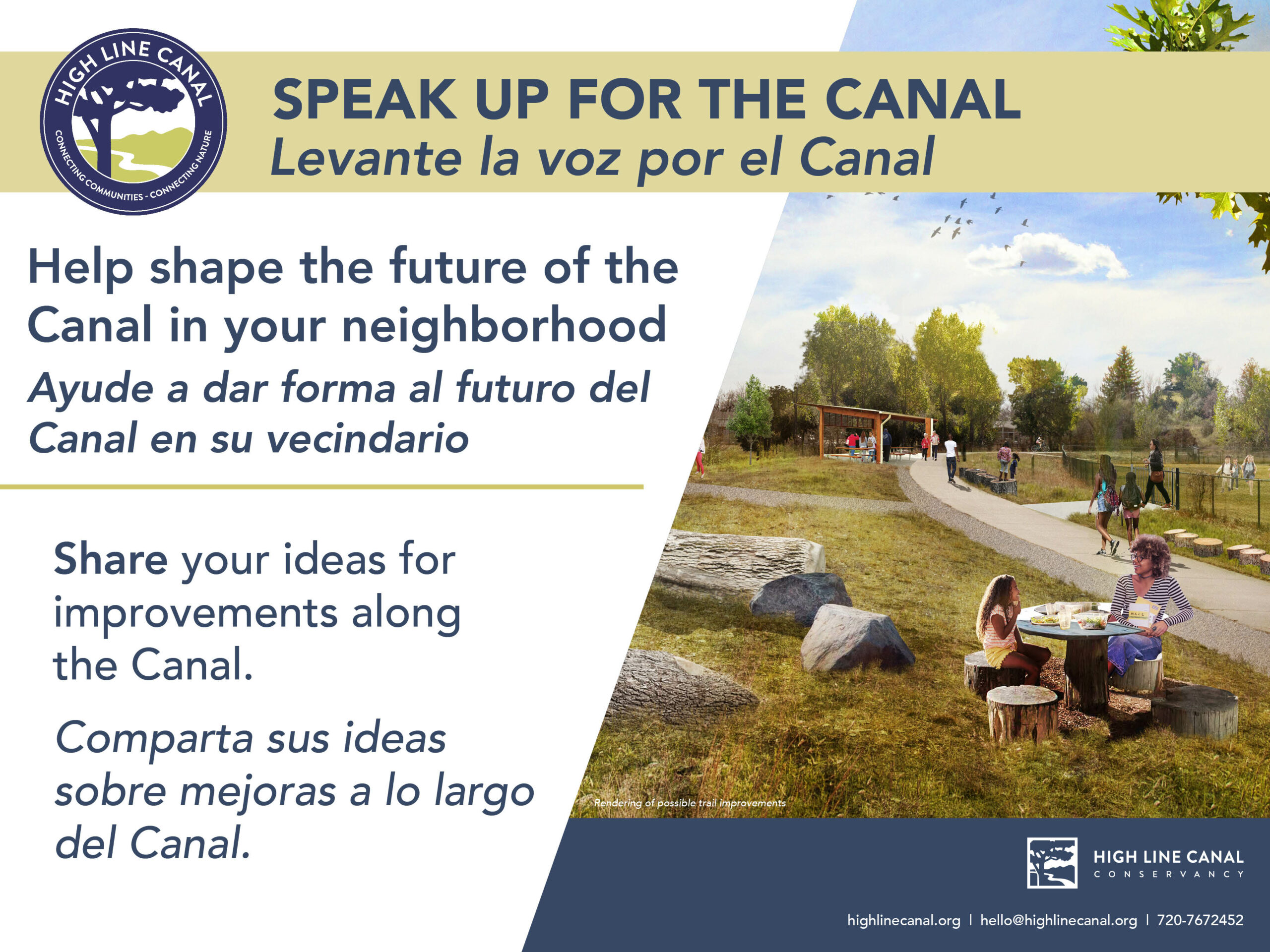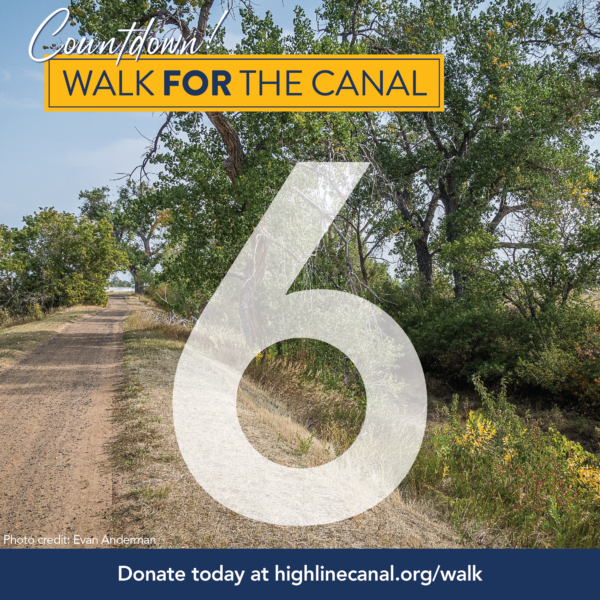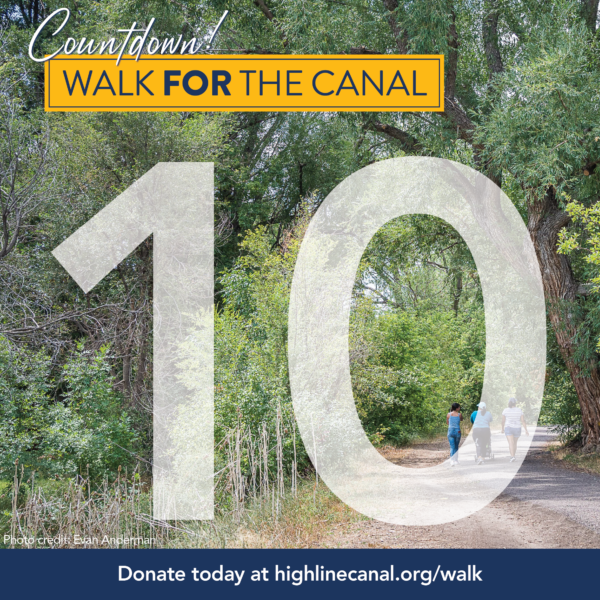Canal trail users may have noticed brush removal projects along the Canal this year. Brush removal projects help keep water flowing in the Canal, whether irrigation water or stormwater, and mitigate the risk of wildfires. The Conservancy is thrilled to partner with South Metro Fire Rescue (SMFR) on these brush removal projects. This blog was written by SMFR Risk Reduction Specialist, Einar Jensen, to highlight brush removals along the Canal and educate residents about wildfire mitigation.
Blog Contribution from Einar Jensen, Risk Reduction Specialist at South Metro Fire Rescue
The National Interagency Fire Center has predicted a normal or average wildfire season for our part of Colorado, including the 71 miles of the High Line Canal this autumn. Average does not mean there is no risk. The predictive models simply suggest that our region will not face significant wildfire risk for a few more months.
It’s critical to remember that wildfires can occur anytime the three parts of the Fire Triangle unite properly. What is the Fire Triangle? The Fire Triangle consists of oxygen, heat, and fuel. Fortunately, our atmosphere traps plenty of oxygen near the Earth’s surface for us. We have plenty of fuel in our community, too, whether it’s the vegetation growing along the Canal, vegetation in our yards, fences, or buildings. Heat sources are the last component — afternoon lightning, fireworks, discarded cigarette butts, and other human carelessness have all provided heat sources that complete the Fire Triangle and have ignited fires along the Canal in the past.
It’s a Great Day to Mitigate
Canal trail users may have noticed brush removal projects along this recreational treasure. Brush removal projects help keep water flowing in the Canal, whether irrigation water or stormwater, and mitigate the risk of wildfires. These projects are also great opportunities for volunteers and staff from the Conservancy, South Metro Fire Rescue (SMFR), Highlands Ranch Metro District, South Suburban Parks and Recreation, Denver Water, and other partners to reduce the risk of wildfires growing from, along, and into the Canal’s ecosystems.
In August of this year, the Conservancy hosted brush removal projects west of deKoevend Park in Centennial. Members of the SMFR Citizens Academy Alumni Program and volunteers and staff from the Conservancy carried dead wood from the Canal and its embankments to the side of the trail. Once complete, crews from the adjoining land manager—South Suburban Parks and Recreation in this case—removed the brush piles from beside the trail. Participants targeted branches with a diameter greater than a thumb and longer than a forearm.
Before a fuel can burn, it must absorb heat. That heat causes any remaining water to evaporate and causes the dried fuel to disintegrate from its solid state to its gaseous form. It’s the gaseous form that actually burns. Removing the dead wood from the Canal removed the fuels most vulnerable to burning.
Most living vegetation resists ignition because it is so full of water. However, there are important exceptions to this rule. Some plant species, such as junipers, contain resins or oils that vaporize rapidly and accelerate the ignition process. It’s important for adjoining property owners to mitigate their backyards to prevent fires from burning through backyards to homes, businesses, schools, places of worship, and infrastructure.
Every day is a great day for mitigation when you own property within a wildfire-prone ecosystem. The goal of mitigation is to create a community that is adapted to wildfire. Property owners in SMFR’s fire district are encouraged to email ReducingRisk@southmetro.org to request a free property wildfire risk assessment. Such an assessment, which usually lasts 20-30 minutes, is an opportunity for a risk reduction specialist to provide the property owner with recommendations for reducing wildfire risk.
Mitigation Tips
Embers—chunks of airborne burning material—are the culprit responsible for igniting many homes in wildfires. Start your mitigation efforts by eliminating easy fuels for embers:
- Remove dead pine needles from gutters and roofing.
- Remove dead pine needles and dead leaves from under and on decking.
- Remove junipers within 30 feet of your home.
If a wildfire is burning behind your home, move combustibles from porches and decks inside.
Here are some other mitigation tips:
- Prune branches above roofing to create a six-foot-tall window of clearance. Removing these branches will reduce the volume of leaves and needles that collect on roofing and in gutters, protect shingles from scraping, and protect the tree from any fire on the roof.
- Trim branches away from eaves and the exterior walls to prevent the branches from damaging them. This action also will prevent flames from having a direct route to your home.
- Trim vegetation away from gas meters.
Some recommendations will be more costly than others in terms of money and time, but all will be catered to individual properties and consider other values such as privacy, aesthetics, and recreation.
As you conduct wildfire mitigation on your property, track your expenses. You may be able to subtract a fraction of your costs from your state taxable income. The details are outlined in §39-22-104(4)(n), Colorado Revised Statutes and www.taxcolorado.com, but the quick version is that the mitigation applies to vegetation rather than structural changes. The total amount of the subtraction may not exceed $2,500.
You are welcome to send me your questions via ReducingRisk@southmetro.org.
Sign up for an upcoming Brush Removal at highlinecanal.org/volunteer.








